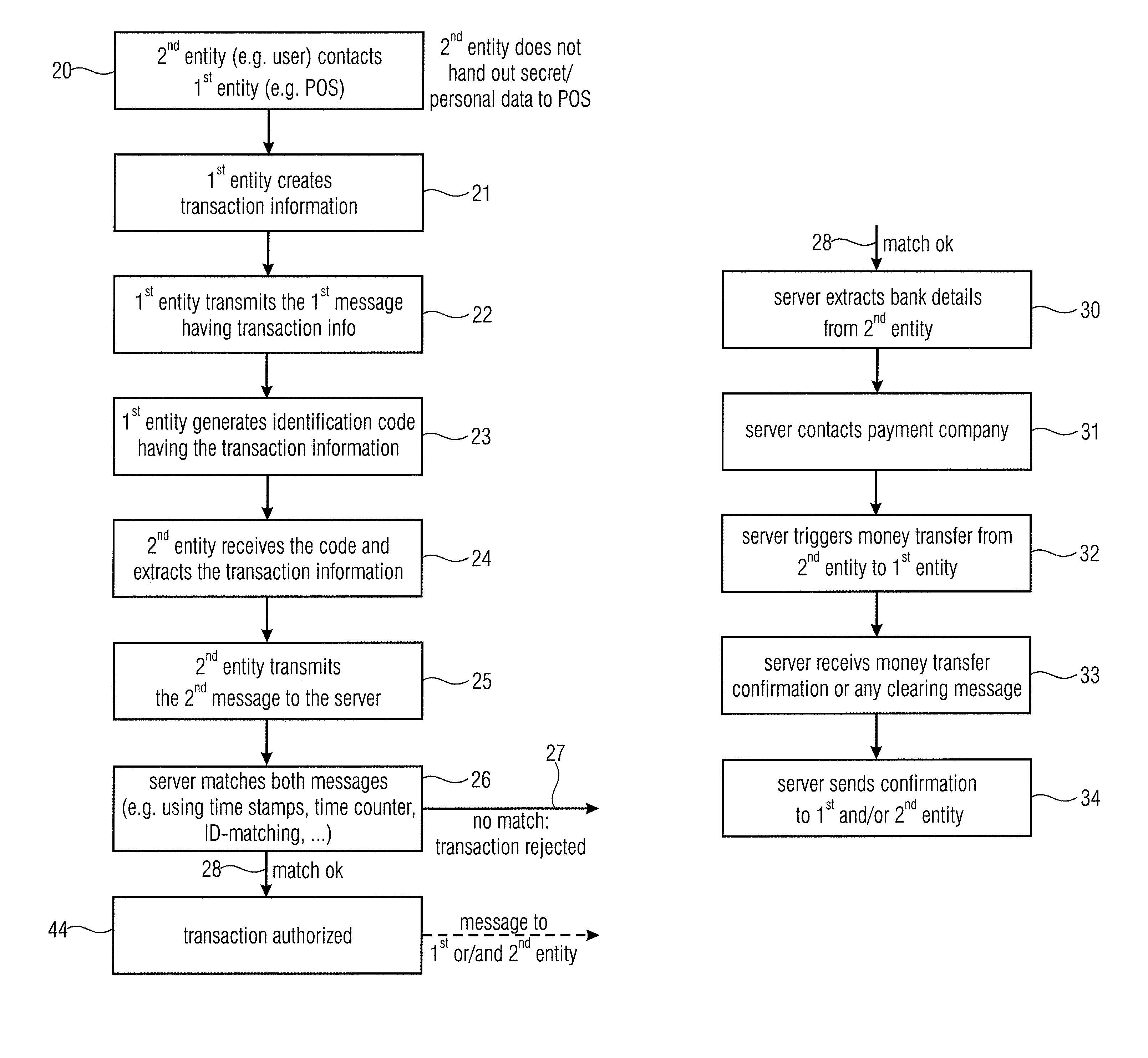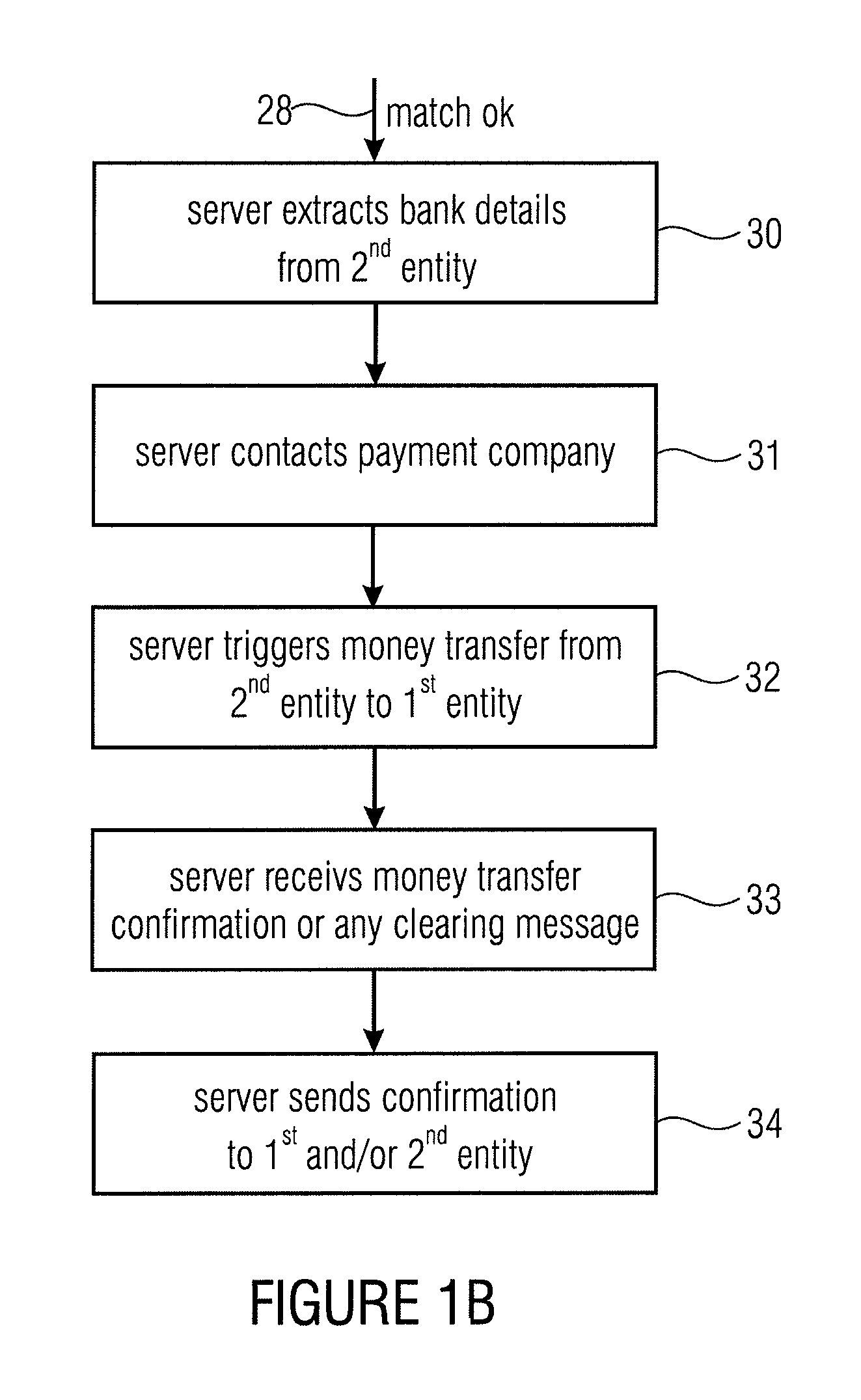Server device for controlling a transaction, first entity and second entity
a server device and transaction control technology, applied in the field of electronic transaction processing, can solve the problems of inability to spread inconvenience, and security problems of payment processes, and achieve the effect of avoiding the spread of extremely secure processes in the consumer community
- Summary
- Abstract
- Description
- Claims
- Application Information
AI Technical Summary
Benefits of technology
Problems solved by technology
Method used
Image
Examples
Embodiment Construction
[0050]FIG. 7a illustrates an overview over the inventive scenario having a first entity 11, a second entity 12 and a third entity 13 which is the server device. Advantageously, all three entities 11, 12, 13 are logically separated and / or locally separated entities. Depending on the application of the inventive process, the first entity can be a selling party such as a POS (point of service / sale), the second entity can be a buying party, i.e., a “user” having a mobile phone which represents the second entity, and the third entity can be a payment company or, generally, a server device which is included in the payment company or which is in the position to securely communicate to a payment company such as a bank or a credit card institute or a certain payment company such as PayPal or any other such entity.
[0051]These three entities perform a specific communication in order to implement a secure transaction. Subsequently, a sequence of message in accordance with an embodiment is descr...
PUM
 Login to View More
Login to View More Abstract
Description
Claims
Application Information
 Login to View More
Login to View More - R&D
- Intellectual Property
- Life Sciences
- Materials
- Tech Scout
- Unparalleled Data Quality
- Higher Quality Content
- 60% Fewer Hallucinations
Browse by: Latest US Patents, China's latest patents, Technical Efficacy Thesaurus, Application Domain, Technology Topic, Popular Technical Reports.
© 2025 PatSnap. All rights reserved.Legal|Privacy policy|Modern Slavery Act Transparency Statement|Sitemap|About US| Contact US: help@patsnap.com



